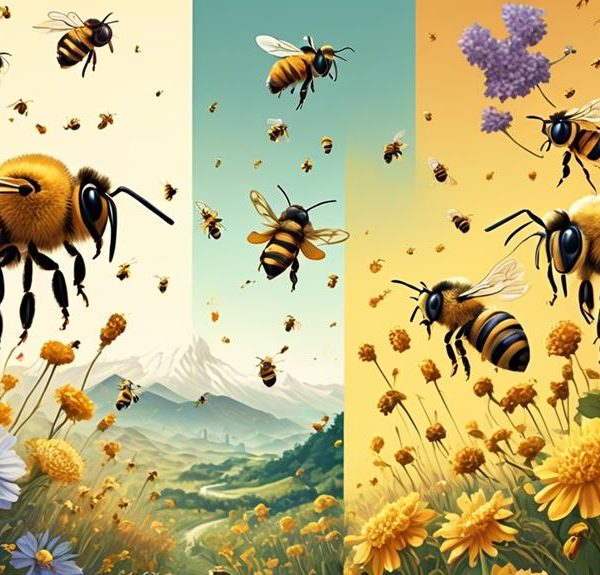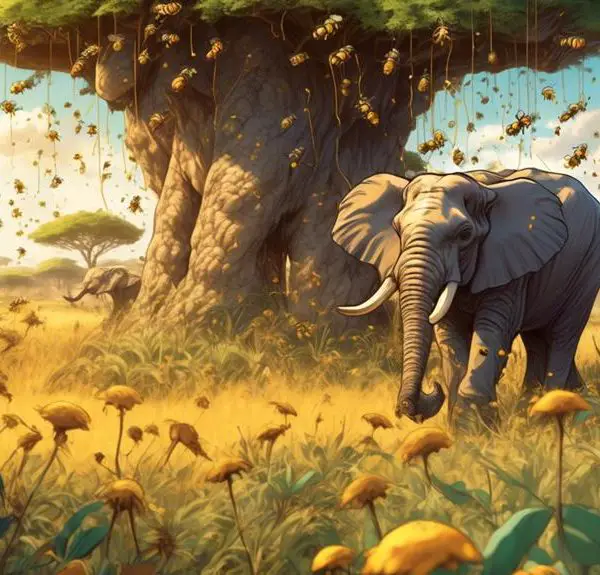Know the intriguing mystery behind the only bee-less continent and its significant impact on our interconnected ecosystem.

What Is the Only Continent Without Bees?
Imagine for a moment, you're an explorer from the age of sail, charting unknown territories in a quest for knowledge. You've stepped foot on every continent, documented flora and fauna, and observed a common thread – the buzzing, industrious presence of bees.
Yet, there's one continent where these vital pollinators are conspicuously absent. You might ask yourself, 'Why are there no bees here?' and 'What impact does this have on the ecosystem?'
Unravel this mystery to broaden your understanding of our intricately interconnected world.
Key Takeaways
- Antarctica is the only continent without bees due to its extreme cold, lack of vegetation, and inhospitable terrain.
- The absence of bees in Antarctica is primarily due to the lack of variety and abundance of flowering plants, the extreme cold of Antarctic winters, and the absence of suitable nesting locations.
- The local ecosystem in Antarctica has adapted to the absence of bees, with plant life relying on spores carried by wind or water for reproduction and many animals feeding on phytoplankton and algae.
- Bee populations vary globally, with North America and Europe experiencing declines due to habitat loss, pesticide exposure, and climate change, while Africa and South America have more robust populations due to natural habitats and fewer incidents of pesticide use.
Identifying the Bee-less Continent
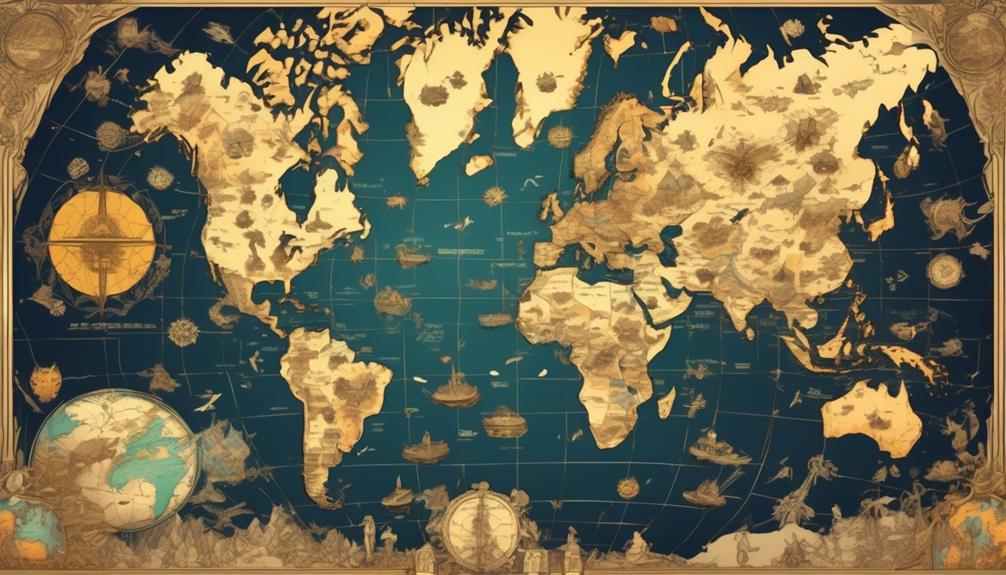
You might find it surprising to learn that Antarctica is the only continent on our planet where bees are conspicuously absent. This might seem like a minor detail, but it's an important one that speaks volumes about the unique environment of this frozen landmass.
You see, bees, like many other insects, require specific conditions to survive and thrive. They need a diverse range of flowering plants for food, warmer temperatures to encourage activity, and suitable habitats for nesting.
In contrast, Antarctica's extreme cold, lack of vegetation, and inhospitable terrain make it impossible for bees to exist. The continent's mean annual temperature ranges from about -20°C on the coast to -60°C in the highest parts of the interior. There's a scarcity of liquid water, the summers are short, and the intense cold persists year-round.
The lack of flowering plants, which are the primary food source for bees, is another major obstacle.
Reasons for Absence of Bees

While it's clear that the harsh Antarctic environment doesn't support bee life, let's delve deeper into the specific factors that make this continent inhospitable for these insects. Fundamentally, bees require a certain set of conditions to survive, and Antarctica fundamentally lacks these.
The first element is variety and abundance of flowering plants, which bees rely on for nutrition. Antarctica is almost entirely devoid of vegetation, with only a few species of mosses and lichens eking out an existence in this freezing wasteland. Without a reliable food source, bees simply can't sustain a population here.
Secondly, bees need a relatively stable, temperate climate. Their small bodies can't withstand the extreme cold of Antarctic winters, which can drop to -80°C. Even during the short summer, temperatures rarely rise above freezing point. Bees also need to maintain a certain temperature inside their hives to keep the brood healthy, an impossible task in such frigid conditions.
Lastly, bees need a suitable habitat for nesting. Antarctica's landscape is mainly ice and snow, offering no suitable locations for bees to build their hives. The absence of bees on this continent is a stark testament to the harshness of its environment.
Impact on the Local Ecosystem
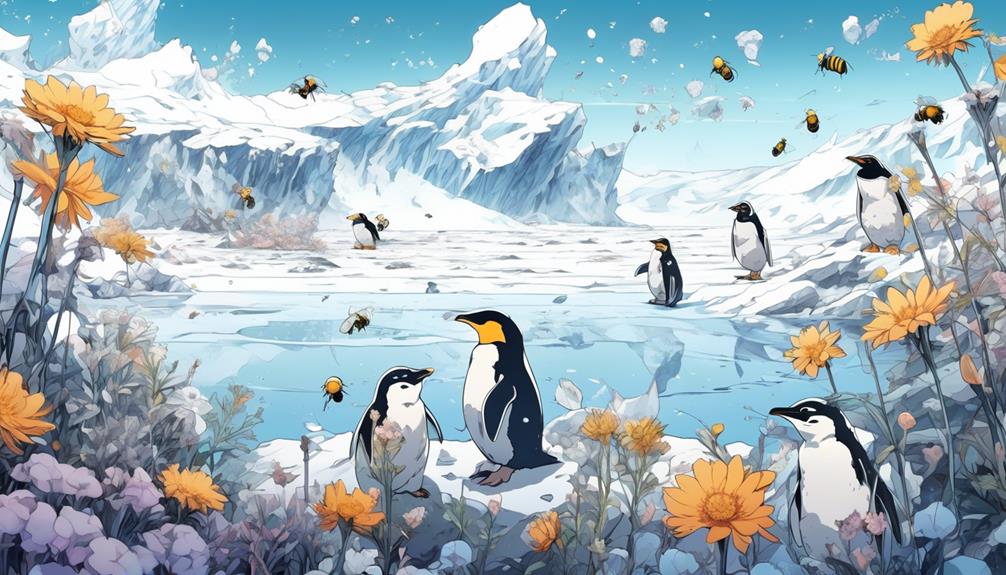
Despite the absence of bees in Antarctica, the local ecosystem has adapted to this reality in unique ways. You see, in most parts of the world, bees are key pollinators. They're crucial for the reproduction of many plant species, transferring pollen from the male parts of a flower to the female parts. But in the harsh, icy environment of Antarctica, traditional plant life is virtually nonexistent. Instead, you'll find mosses, lichens, and algae, organisms that reproduce via spores carried by the wind or by water.
This doesn't mean Antarctica's ecosystem doesn't suffer from the lack of bees. Bees are more than pollinators; they're also part of the food chain. In other continents, birds, small mammals, and insects prey on bees or their larvae. In Antarctica, this source of food is absent. But again, Antarctica's unique fauna has adapted. Many animals, like the Antarctic krill, feed on the abundant phytoplankton and algae.
Comparing Global Bee Populations
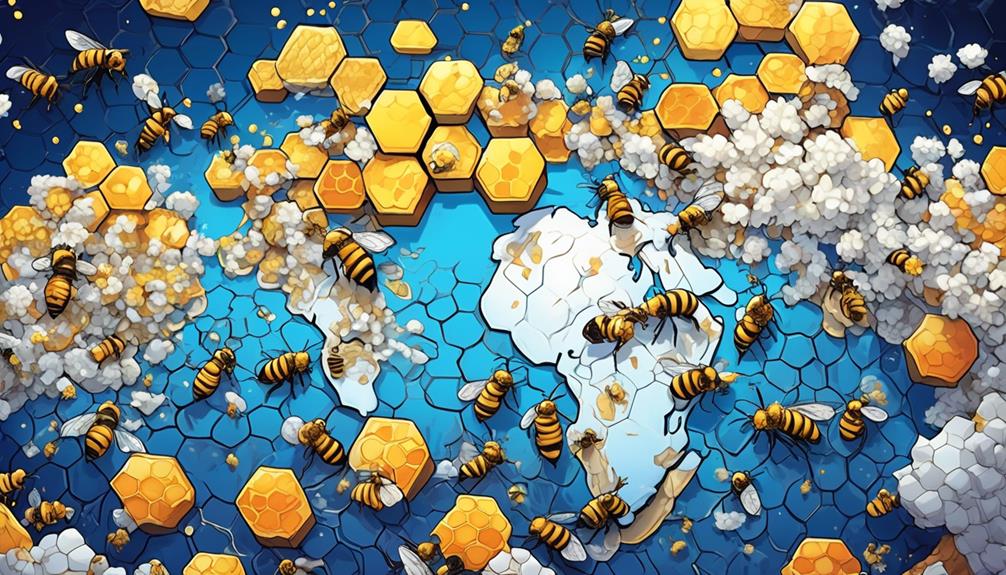
Across the globe, bee populations exhibit striking variations, reflecting the diverse climates, ecosystems, and human activities that influence their survival and propagation.
In places like North America and Europe, you'd observe a disturbing trend of declining bee populations. This is due largely to habitat loss, pesticide exposure, and climate change.
Contrastingly, in regions like Africa and South America, bee populations tend to be more robust. This can be attributed to the prevalence of natural habitats and fewer incidents of pesticide use. However, these regions aren't immune to the threats faced by bees globally.
Interestingly, the global distribution of bees isn't uniform either. For instance, the highest number of bee species is found in the Mediterranean region, due to its diverse flora and favorable climate. On the other hand, Antarctica is the only continent without bees, primarily because of its extreme cold conditions, which are unsuitable for bee survival.
To protect global bee populations, it's important to understand these geographical variations. Devising targeted strategies to counteract the specific threats faced in different regions could be key to ensuring bee survival and, consequently, the health of ecosystems worldwide.
Potential for Future Bee Colonization
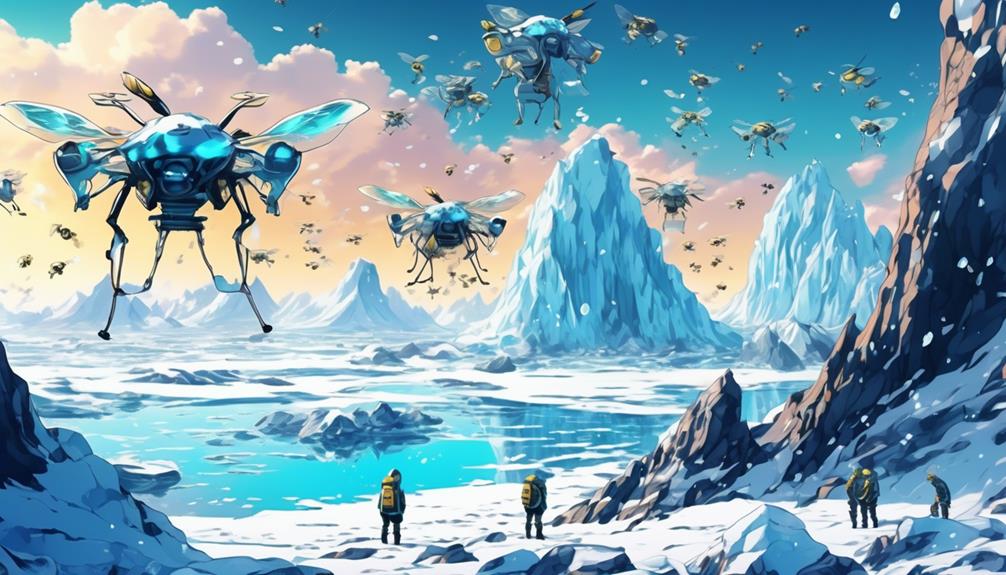
Surprisingly, there's potential for future bee colonization in areas previously believed unsuitable, if certain ecological changes occur. As you might know, bees require specific conditions to thrive – primarily, diverse plant life and temperate climates. Let's delve into the data that suggests future bee colonization in such areas.
Climate Change | Plant Biodiversity | Bee Colonization Potential |
|---|---|---|
Increased Rainfall | Increased Plant Variety | High |
Warmer Temperatures | Extended Flowering Seasons | Medium |
Ice Cap Melting | New Land Exposed | Low |
Sea Level Rise | Coastal Plant Loss | Negative |
Increased CO2 Levels | Increased Plant Growth | High |
This table indicates how various climate changes can potentially affect plant biodiversity and the subsequent potential for bee colonization. For instance, increased rainfall can enhance plant variety, creating favorable conditions for bees. Conversely, rising sea levels could diminish coastal plant life, negatively impacting bees. Interestingly, higher CO2 levels might boost plant growth, providing more habitats and food for bees.
It's crucial to understand these dynamics as they provide insight into possible future scenarios for bees. Remember, our world's ecosystems depend heavily on these little pollinators. Any change in their distribution could have far-reaching effects.
Frequently Asked Questions
What Are the Main Types of Bees Found Across the World?
You'll find a diverse range of bees globally. The most common types include honey bees, known for their honey production, and bumblebees, recognized for their large, furry bodies.
There are also solitary bees like mason bees and leafcutter bees which nest individually. Additionally, you'll find sweat bees, which are attracted to human sweat.
Each of these types contributes to the world's ecosystems through their pollination activities, making them essential for our environment.
How Does the Absence of Bees Affect Agricultural Practices?
Without bees, your agricultural practices suffer immensely. Bees are vital pollinators, and their absence reduces crop yield and quality. You're forced to rely on wind and other insects for pollination, which aren't as effective. This impacts your harvest and ultimately, your income.
Can Other Insects Replace the Role of Bees in Pollination?
Yes, other insects can indeed replace bees in pollination to some extent.
You'll find that insects like butterflies, beetles, and wasps also play a significant role in pollination.
However, bees are supreme pollinators due to their size, hairiness, and feeding habits. They can carry more pollen and transfer it more efficiently.
What Are Some of the Common Diseases Affecting Bees Globally?
Bees worldwide face numerous diseases that impact their health and survival. You've probably heard of Colony Collapse Disorder, but that's not all. Bees are also prone to fungal, viral, and bacterial infections, such as Nosema diseases and Deformed Wing Virus.
Pesticide exposure can also lead to various illnesses. These factors, combined with habitat loss, contribute to the declining bee populations we're witnessing today. It's a complex issue requiring urgent attention.
Are There Any Ongoing Scientific Projects Aimed at Introducing Bees to This Bee-Less Continent?
You're probably wondering if there are scientific projects aimed at populating the bee-less continent with these vital pollinators. Unfortunately, introducing bees to an environment where they haven't evolved naturally can create ecological imbalances.
It's better to focus on preserving existing bee populations and their natural habitats. Current scientific efforts are geared more towards understanding, preventing and treating bee diseases, rather than introducing them to new environments.
Conclusion
So, you've discovered that Antarctica is the only continent without bees. The severe climate restricts their survival, significantly impacting the local ecosystem.
Comparatively, other continents teem with diverse bee populations. Although the prospect of future bee colonization in Antarctica remains uncertain, it's a fascinating topic for scientific exploration.
This discovery underscores the diverse adaptability of bees and their crucial role in the world's ecosystems.

